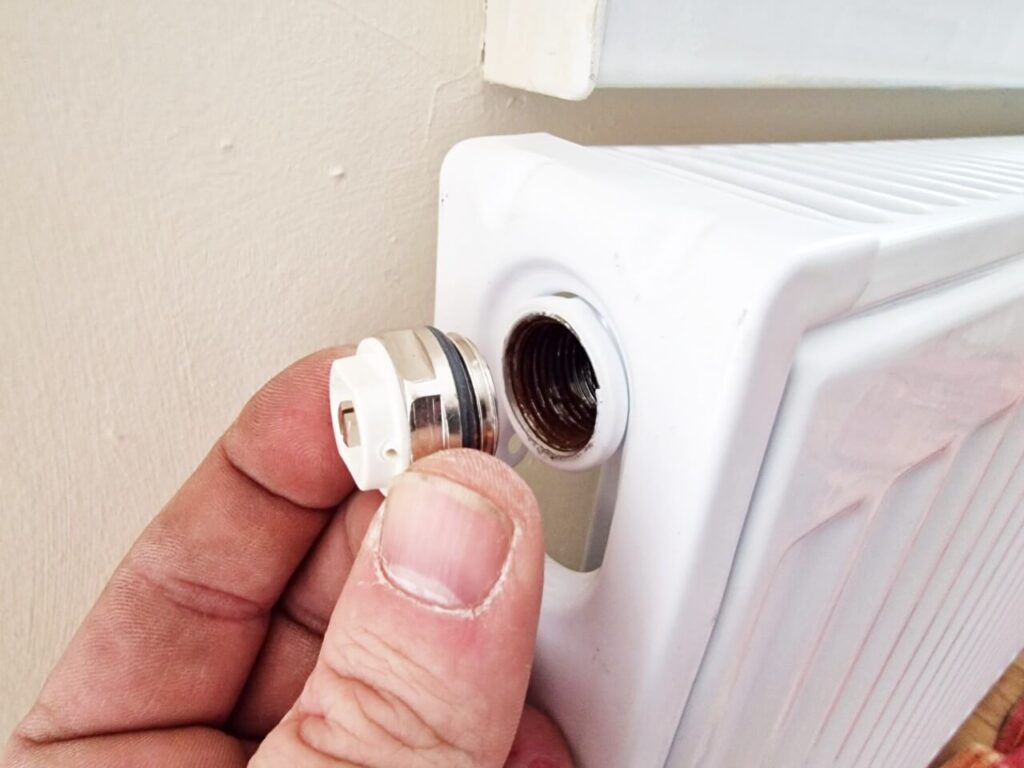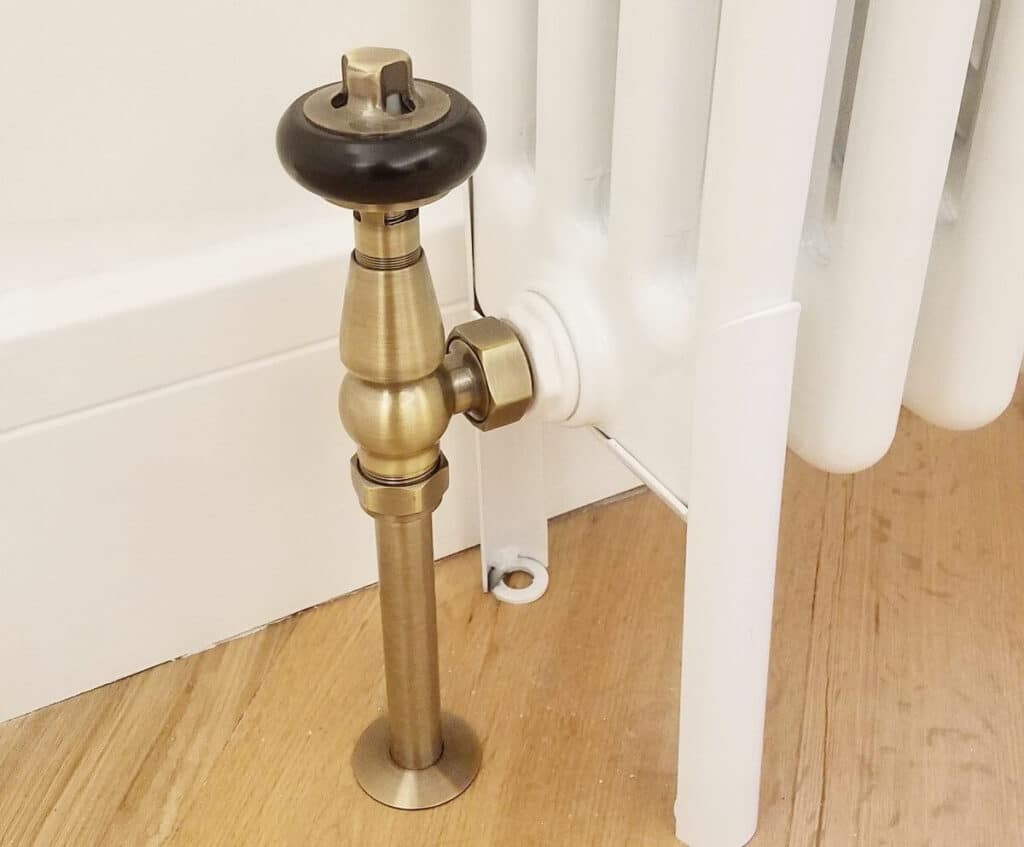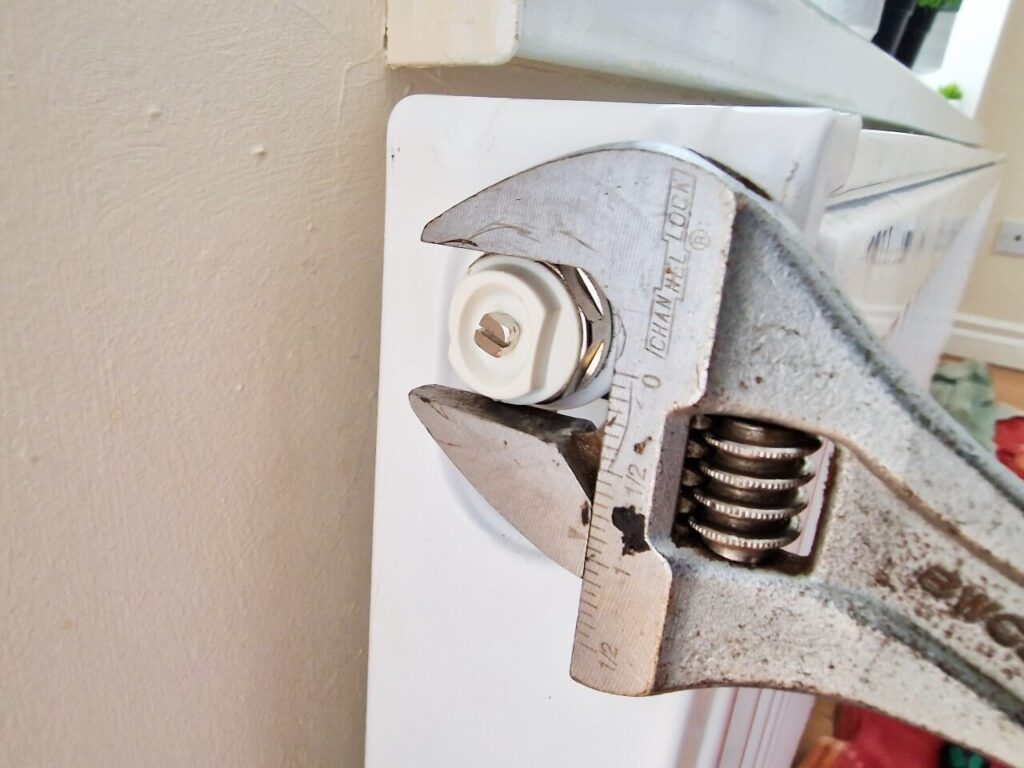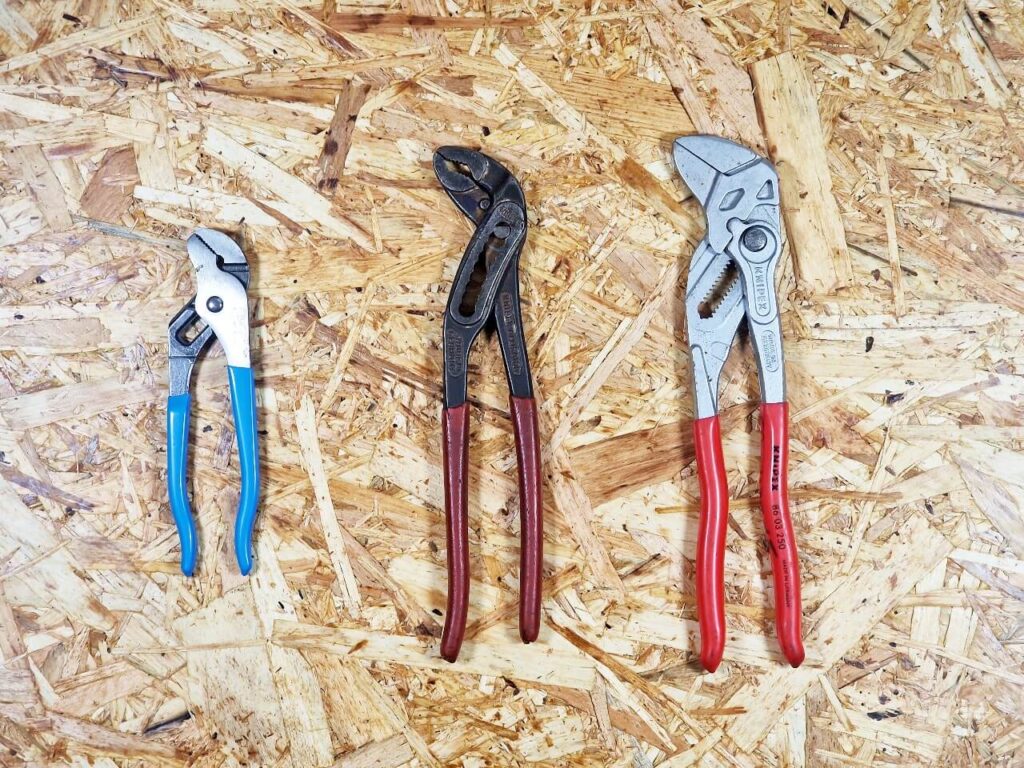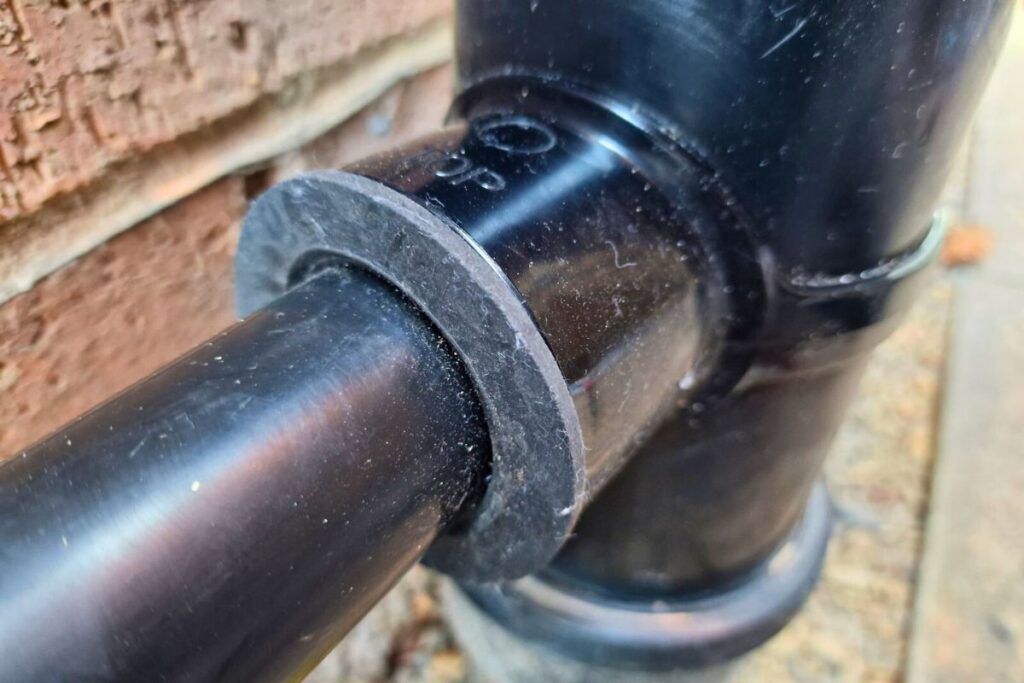Last updated on February 24th, 2024
A radiator bleed valve is a screw on a radiator for bleeding the air out and for venting radiators when draining the central heating system.
A radiator leaking water from the bleed valve might need to be replaced. Bleed screws can snap and wear down over time.
I have been fitting and replacing radiators full-time for over a decade, and I have come across most radiator problems and all different types of radiator bleed valves.
Replace a Radiator Bleed Valve
Thankfully, replacing a bleed valve is not like replacing a radiator valve and you do not need to remove the radiator.
There are a few reasons why you might need to replace a bleed valve:
- The radiator is leaking from the bleed valve
- The bleed valve has worn down
- The bleed valve is broken or has snapped off
- The bleed valve is stuck
If it’s a modern radiator then replacing the bleed valve is easy and almost always possible.
When the bleed valve is sitting inside a large nut then this nut can be removed and replaced but if it’s just a screw on an old radiator bleed valve then if it’s broken or too worn you might not be able to replace it.
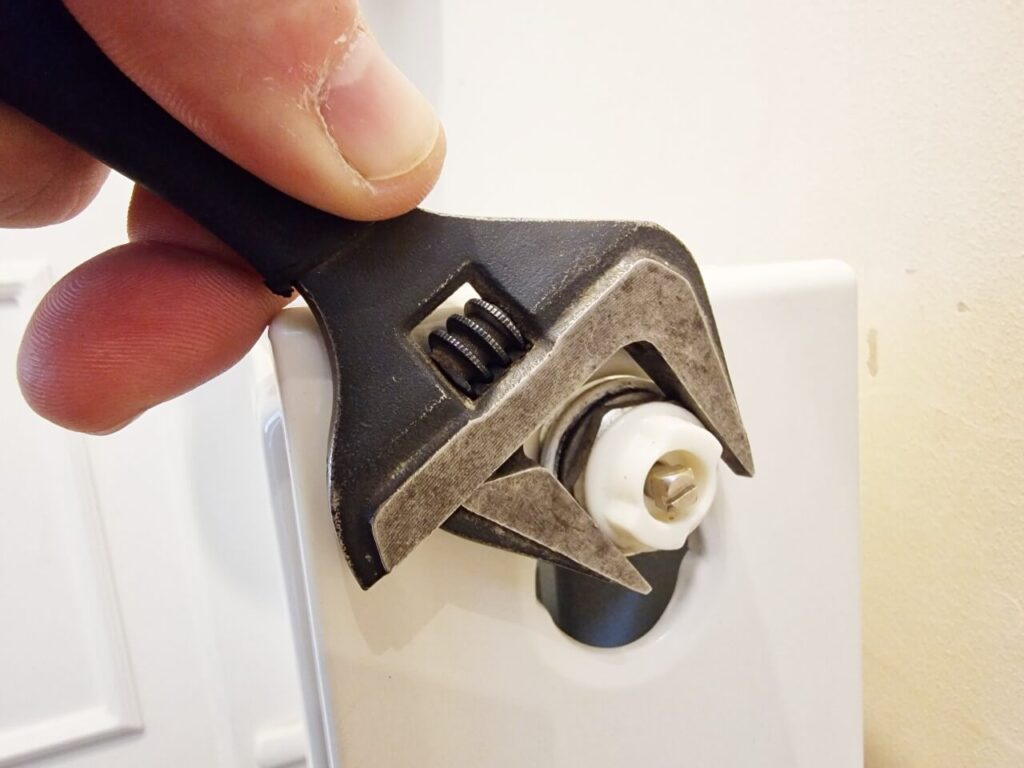
How to replace a radiator bleed valve:
- Isolate the radiator by closing both of the radiator valves
- Turn the bleed screw anti-clockwise with a radiator bleed key or screwdriver and let the water come out onto an old towel until it stops coming out
- Remove the bleed valve from the radiator using an adjustable spanner or the bleed screw with a bleed key
- Screw in the new bleed valve or screw and tighten up
- Open the radiator valves and check for leaks
If the water doesn’t stop coming out after isolating the radiator then one of the radiator valves must be broken and not closing fully.
You will have to drain (or partially drain) the central heating system if this is the case.
Radiator Leaking From Bleed Valve
If you have a radiator leaking from the bleed valve, then there are three main options to fix this leak:
- Seal the threads on the radiator bleed valve
- Replace the radiator bleed valve
- Replace the radiator
Sealing The Threads
If you can remove the screw or small nut after isolating the radiator, you can add some jointing compound to the screw or PTFE tape to the nut and refit it.
If it’s the large nut that comes on most modern radiators, then this will have a rubber O-ring seal, in which case you should replace it if you find the correct size.
Replacing The Radiator Bleed Valve
If you can remove the old bleed valve or screw then replacing it is the best option most of the time.
Radiator bleed valves are cheap so if you can get the correct size easily then you should replace it when the old one leaks.
Replacing The Radiator
Sometimes when the bleed screw is broken off and you can’t remove it you might have to replace the radiator.
Also, another reason to replace a radiator when you have a leaking bleed valve might be rusting around the valve and threads on the radiator.
Once a radiator is rusting enough to leak then it’s time to replace the radiator.
How to Remove a Worn Radiator Bleed Valve
Sometimes on old radiators, the bleed valve screw becomes worn and rounded and no matter how hard you try, you just can’t get the bleed key to grip the bleed screw enough to turn it.
There are a few different ways to remove a worn radiator bleed valve:
- Grip the worn bleed valve with some water pump pliers
- Hammer on a small socket from a socket set
- Use a screw extractor kit
Gripping The Worn Radiator Bleed Valve
You can sometimes grip the worn bleed screw with some:
If you can’t grip it with the water pump pliers then you can try gripping it with some pin nose pliers and then grip the pin nose pliers with the water pump pliers as close to the radiator as possible.
Using a Socket And Hammer
Find a socket that fits onto the worn bleed screw and then go down one size.
For example, if an 8 mm socket fits on the bleed screw, use a 7 mm socket and hammer it onto the bleed screw, then turn the socket ant-clockwise with a ratchet until it comes out.
Using a Screw Extractor Kit
Drill a small hole in the worn bleed screw and use a screw extractor kit to remove it. This is very tricky but is possible.
No Bleed Valve on Radiator
If there is no bleed valve on a radiator and the radiator needs to be bled, then you should try to turn any nuts you see to let the air out.
You can get a self-tapping bleed valve screw that you can drill into the radiator panel on certain radiators.
Having no bleed valve on a radiator might mean you have to replace the radiator.
If the radiator is not getting hot enough to heat the room because of the air inside, then replacing the radiator might be the best option.
How to Bleed a Radiator
Knowing how to bleed a radiator can save you a few quid and from having to wait for a plumber to sort it.
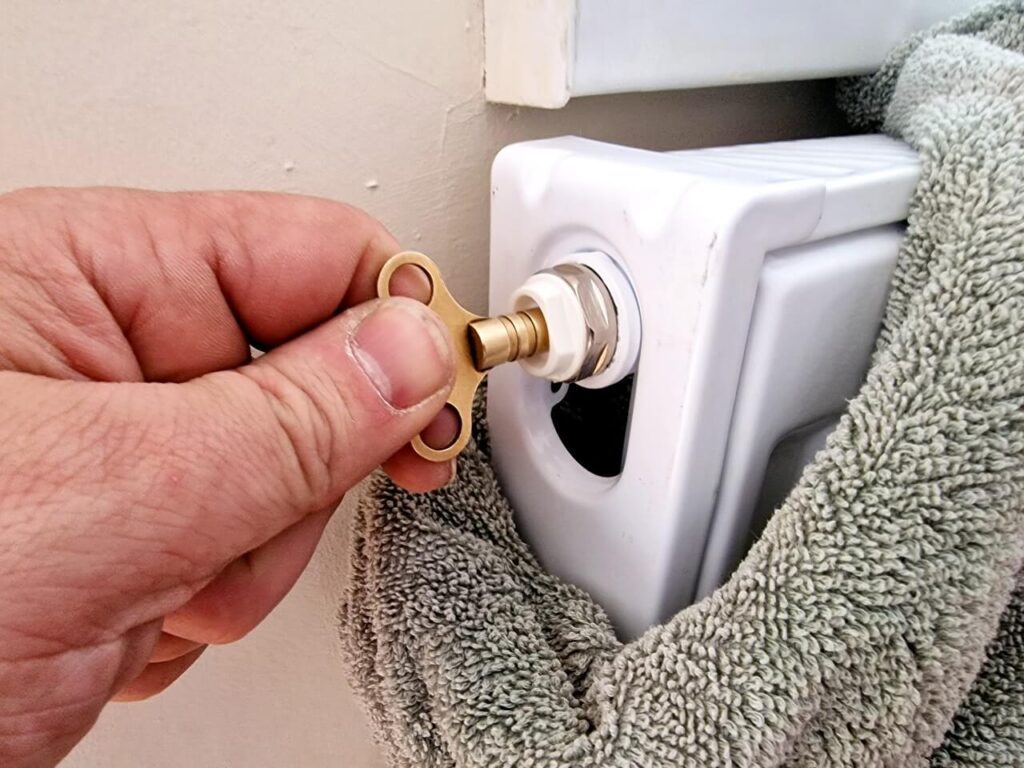
Bleeding a radiator is a simple process that you should know:
- Hold an old towel under the radiator bleed valve
- Use a bleed key (or screwdriver) to turn the bleed screw anti-clockwise until you hear the air coming
- Close the bleed screw when the water starts coming out
- Repressurise the boiler pressure
Summary
Most radiator leaks come from a leaky radiator valve, but sometimes the bleed valve leaks or breaks and needs replacing. This is easy most of the time.
If you have a modern radiator then this should be simple but on old radiators, you might have to replace the radiator.
If you can't find the bleed valve on your radiator then keep looking because there needs to be one.
Feel free to ask me any questions in the comment section below and I’ll try my best to help.
Please share this post if you find it helpful.
FAQs
Where is the bleed valve on my towel radiator?
The bleed valve on a towel radiator is usually at the top on the right-hand side.
There might be a cover over the bleed valve that you need to remove to access it. These can be pulled off or sometimes need to be screwed off.
The bleed valve on a towel radiator can also be somewhere on the back, which you can’t see, so you need to feel around with your fingers to find it.
What does a radiator bleed valve look like?
On older radiators, a radiator bleed valve looks like a little square piece of metal. The square head will be inside a larger nut if it’s a newer radiator.
What size is a radiator bleed valve?
The most common thread size for modern radiator bleed valves is half-inch BSP. This should measure around 21 mm across, but the actual thread size you need is a half-inch BSP.
Can I change a radiator bleed valve without draining the system?
Yes, you can change a radiator bleed valve without draining the system.
You must close both the radiator valves to isolate the radiator and then let some water out of the radiator before replacing the radiator bleed valve.
If one of the radiator valves is broken and does not isolate the radiator from the system, then you will probably have to drain the system to replace the bleed valve.
Can radiator bleed valves be replaced?
Yes, radiator bleed valves can definitely be replaced. Whether it’s an old single screw type bleed nipple (unless it snaps in the radiator) or a bleed screw that fits into a larger nut, a radiator bleed valve can always be replaced.

